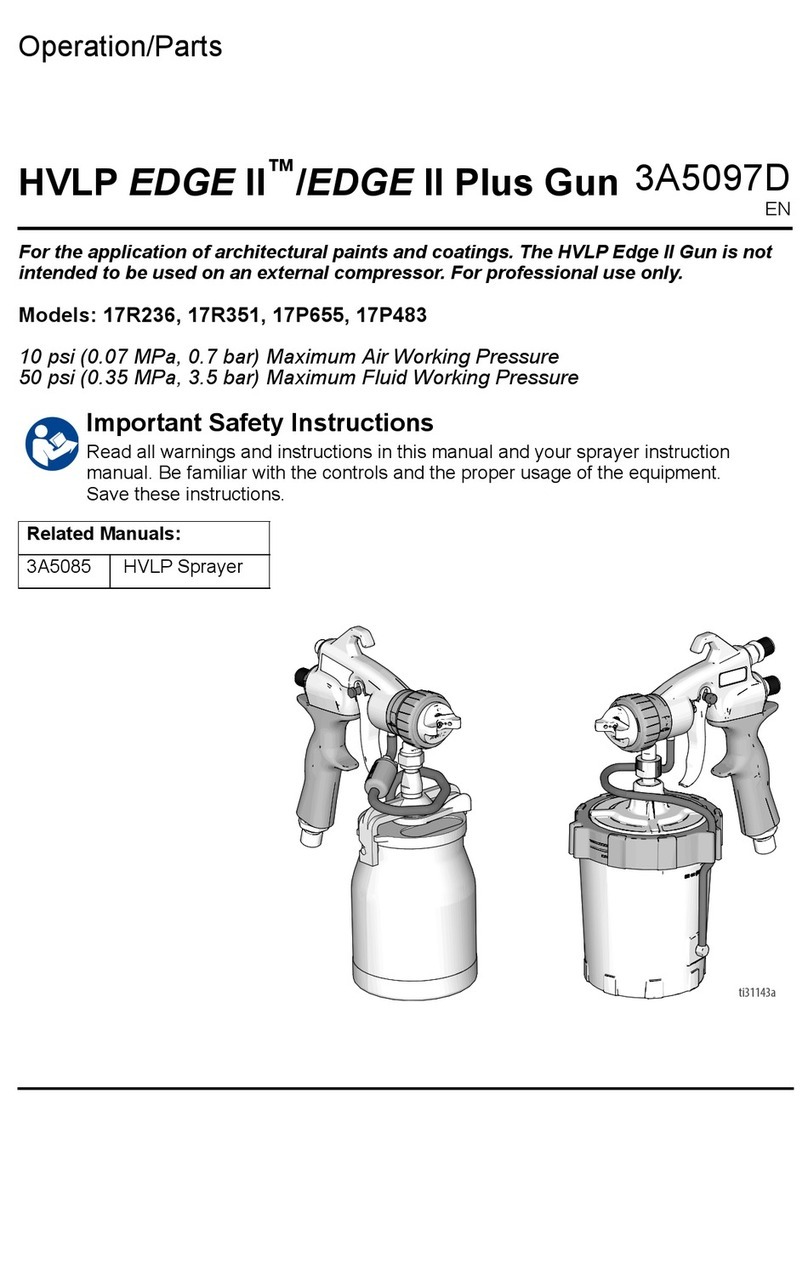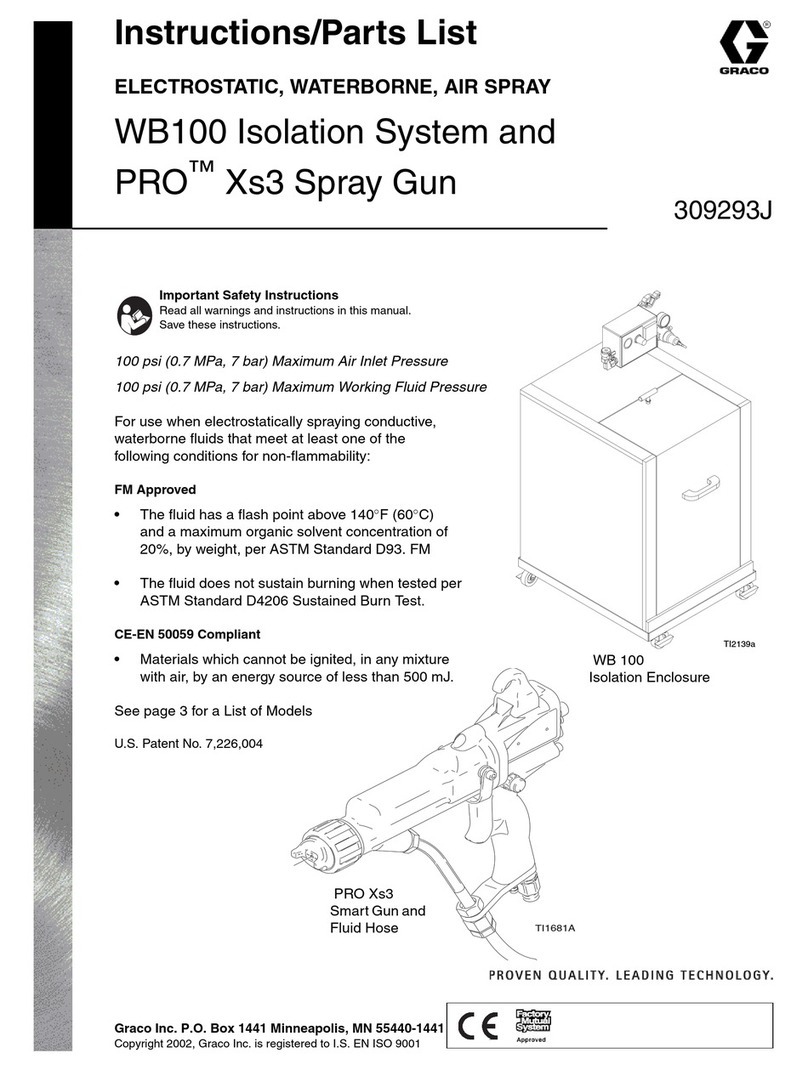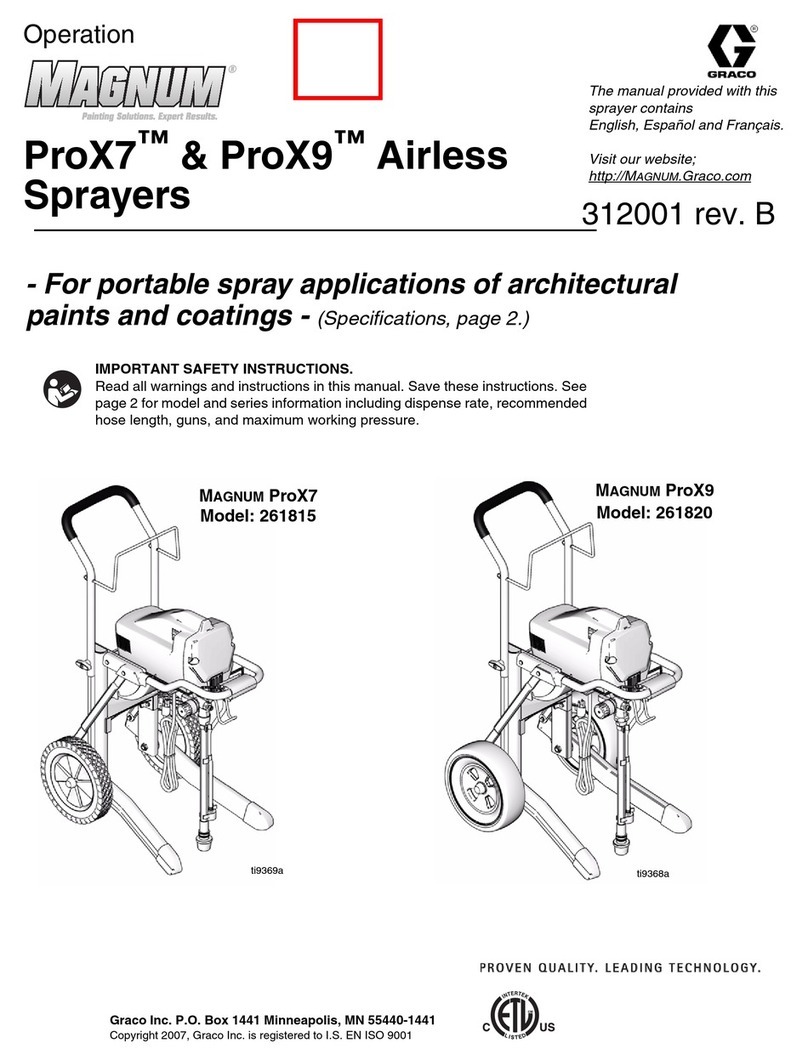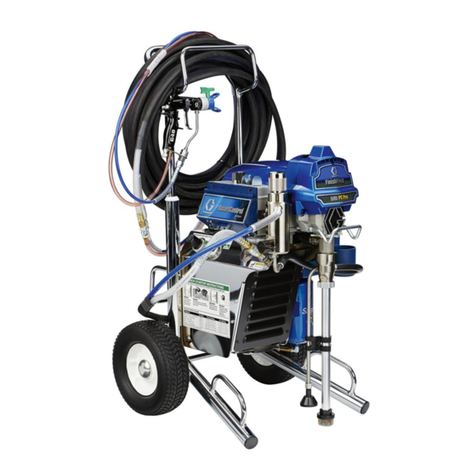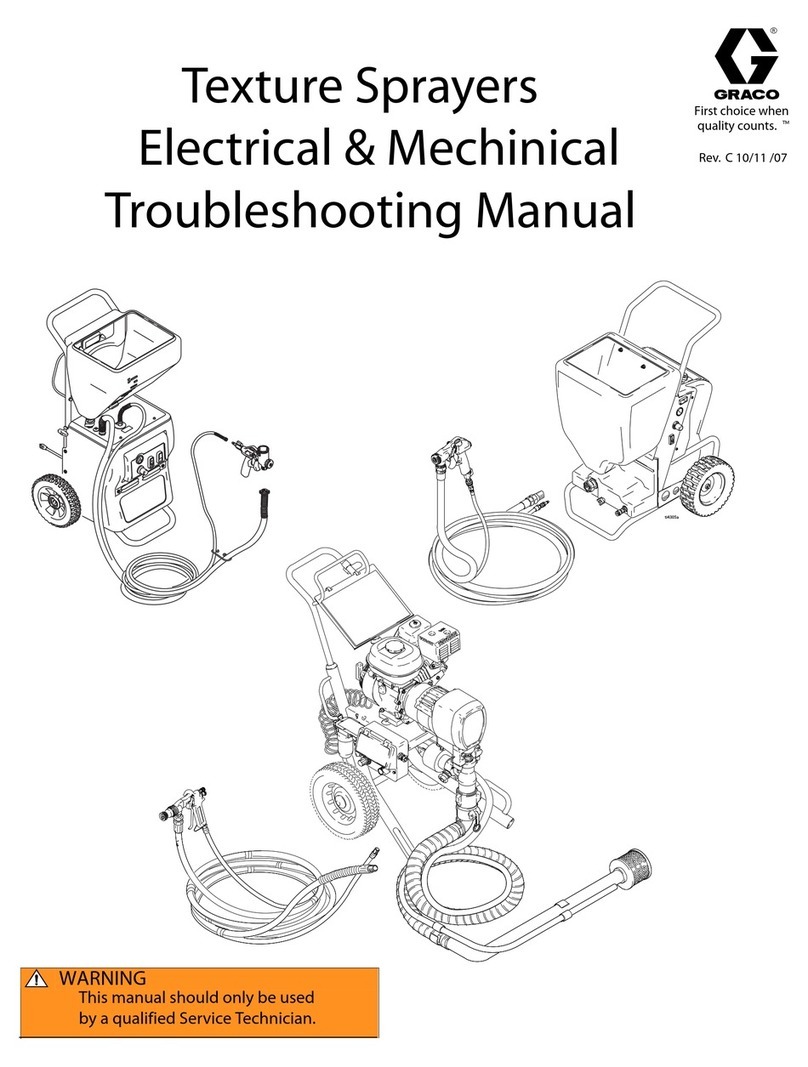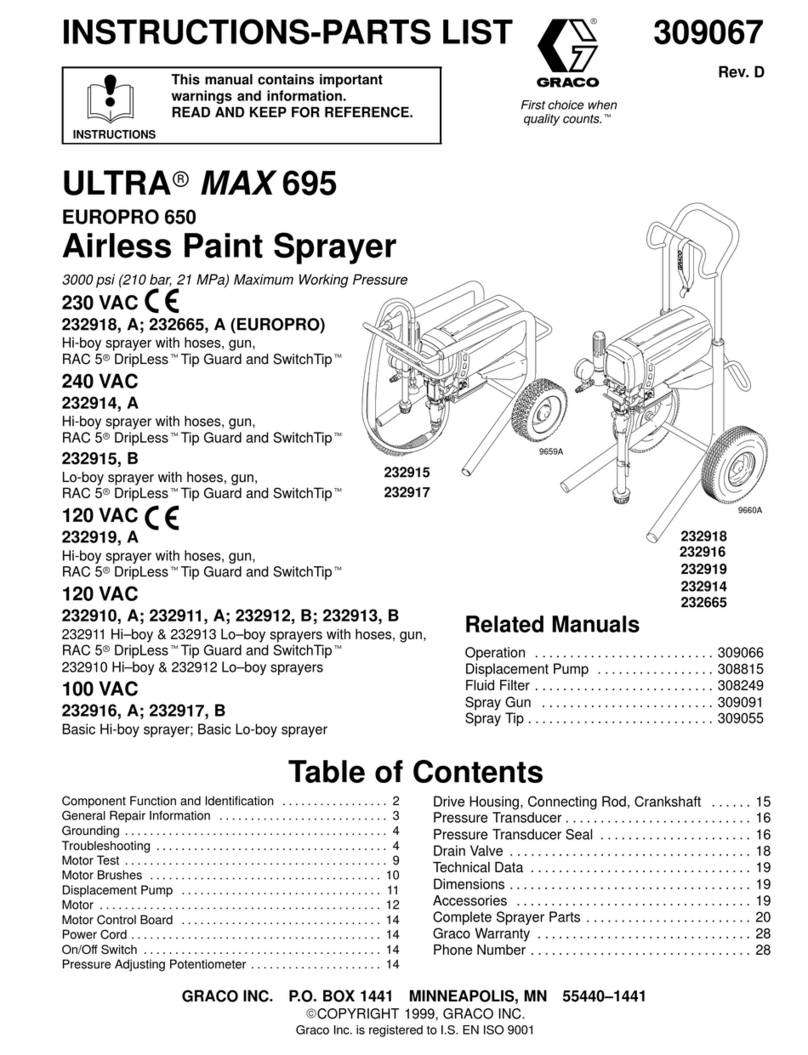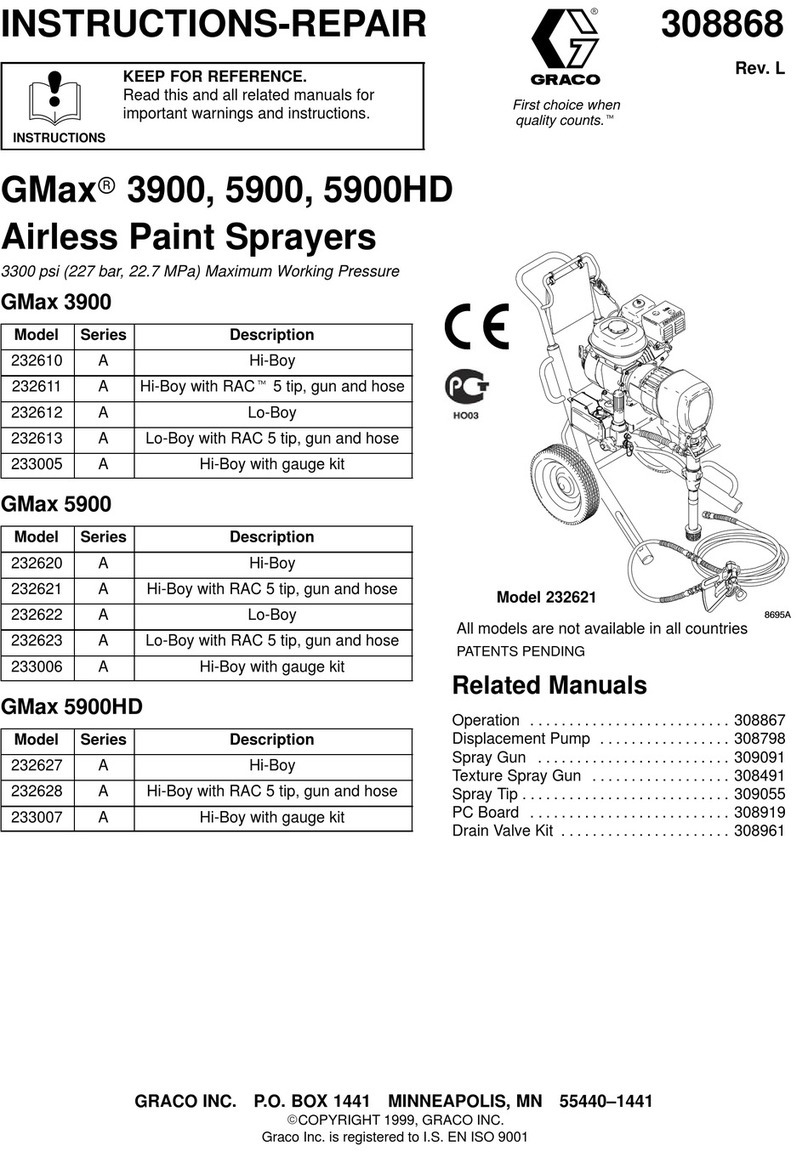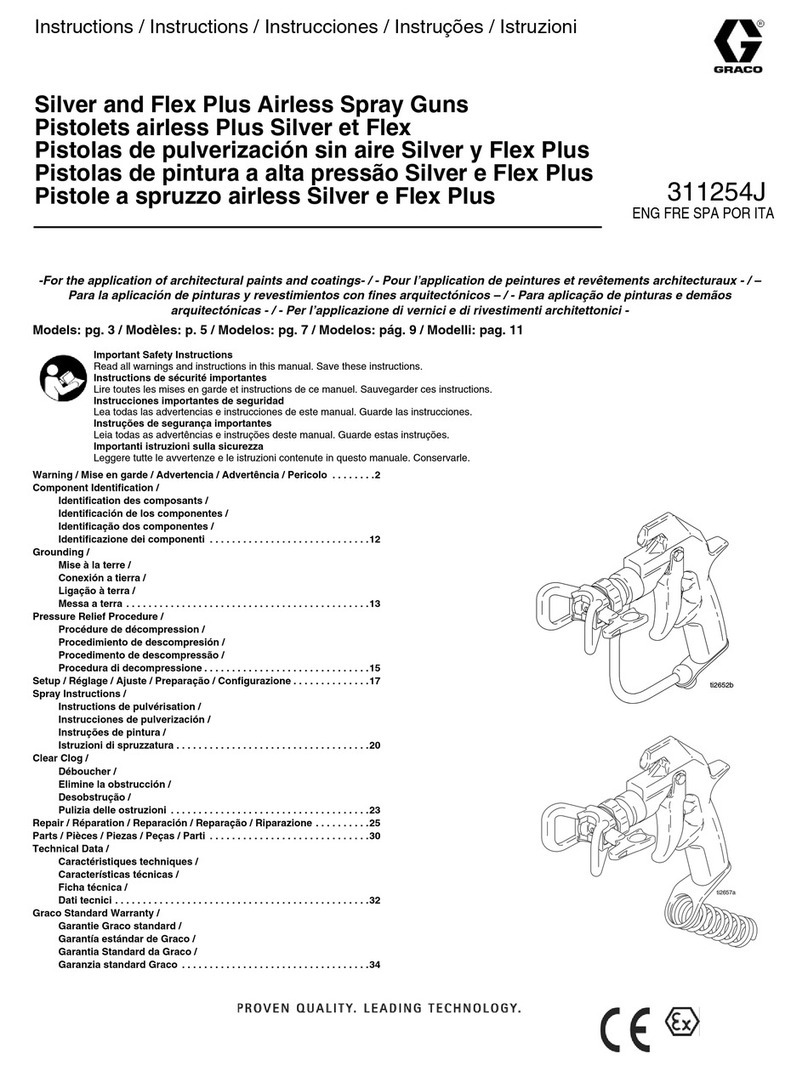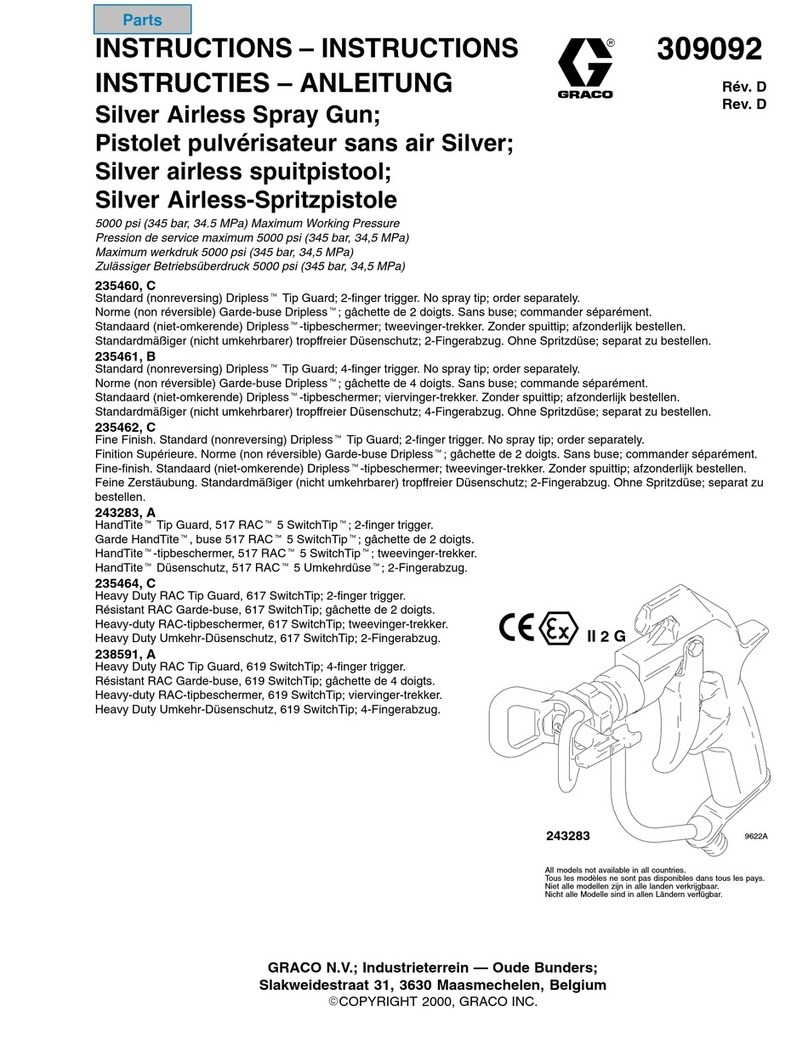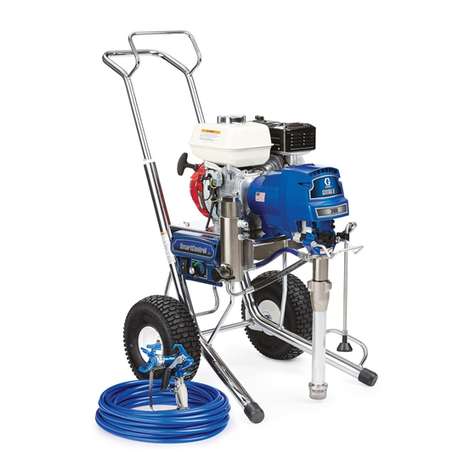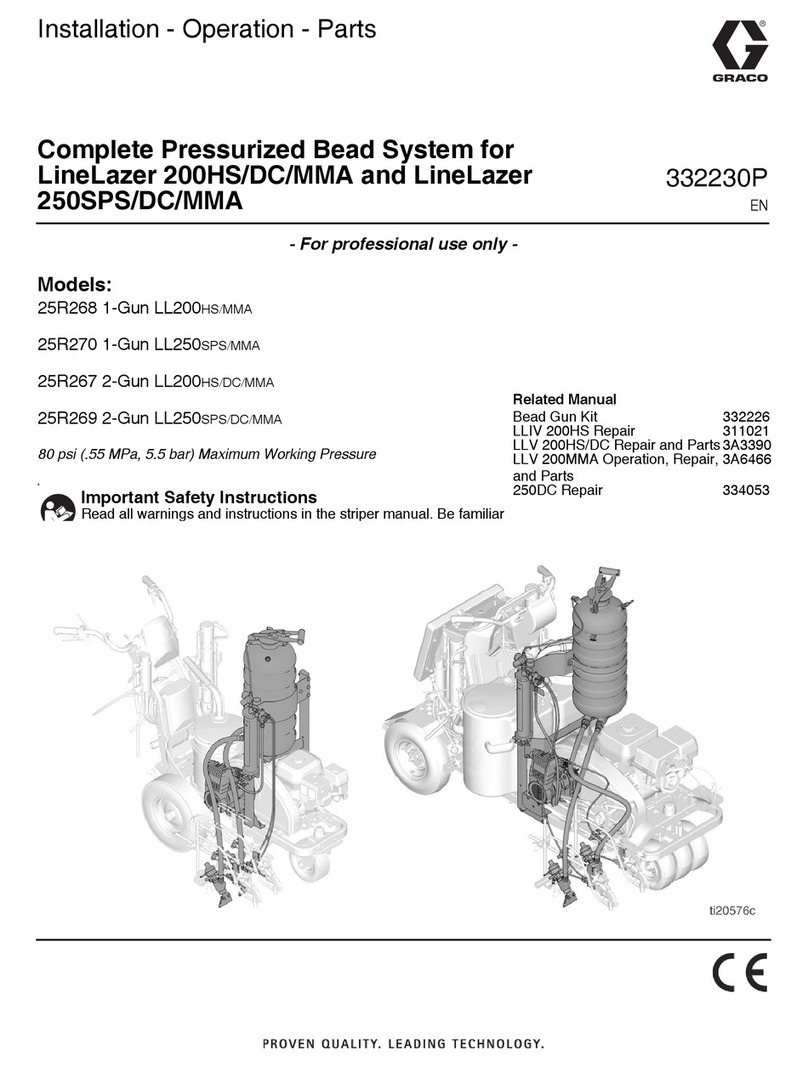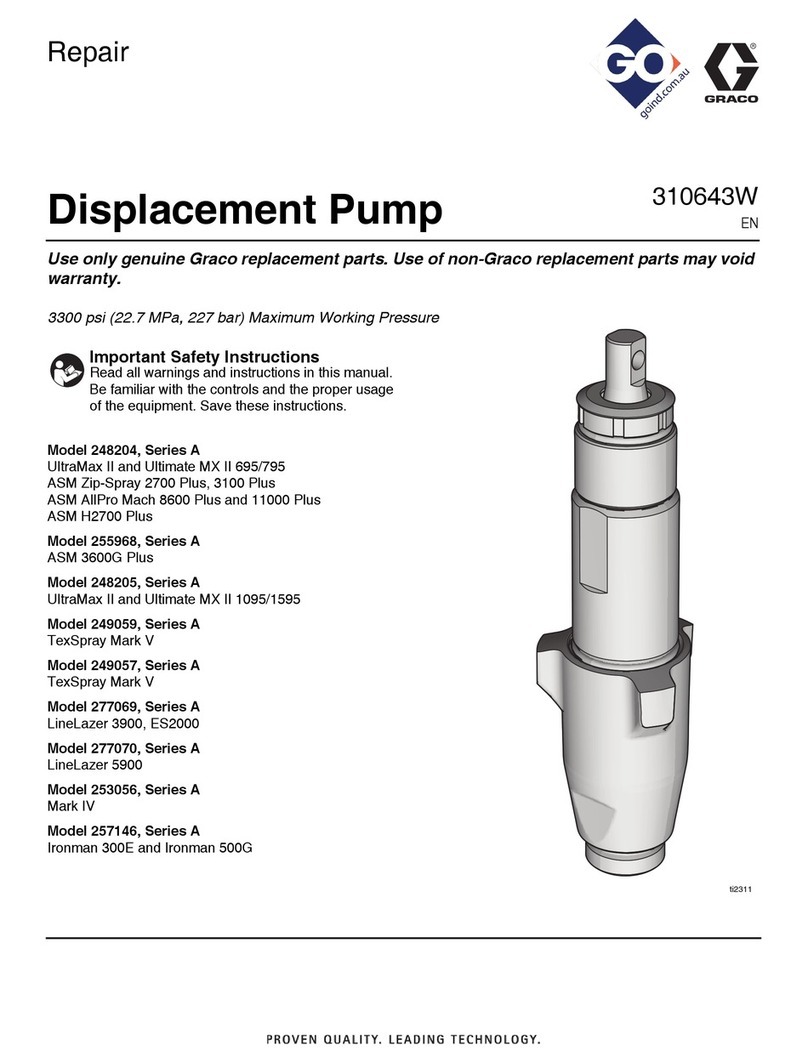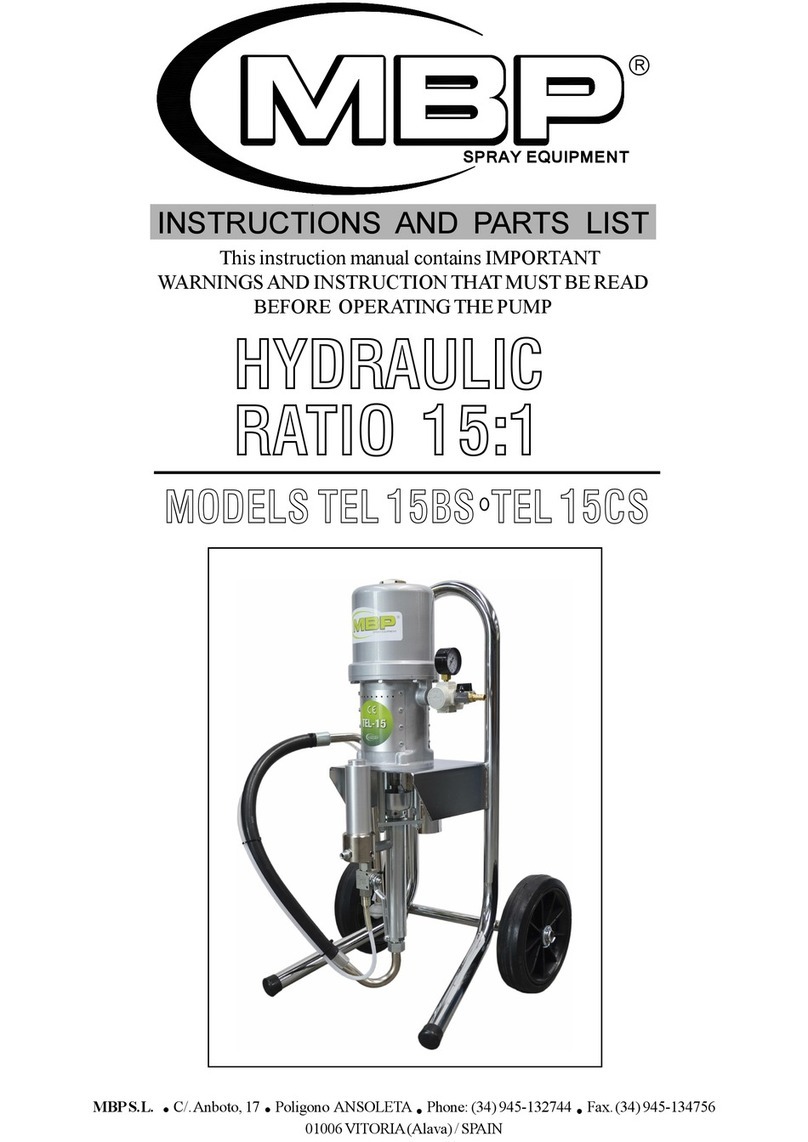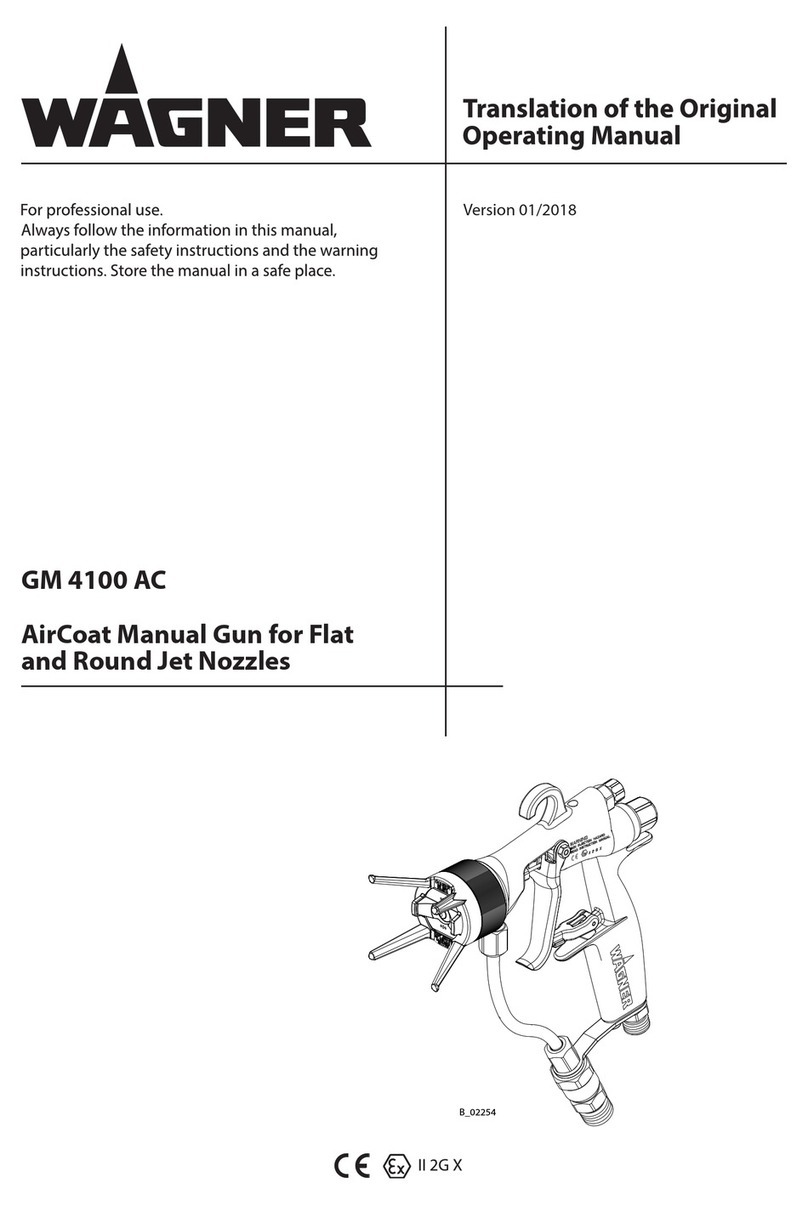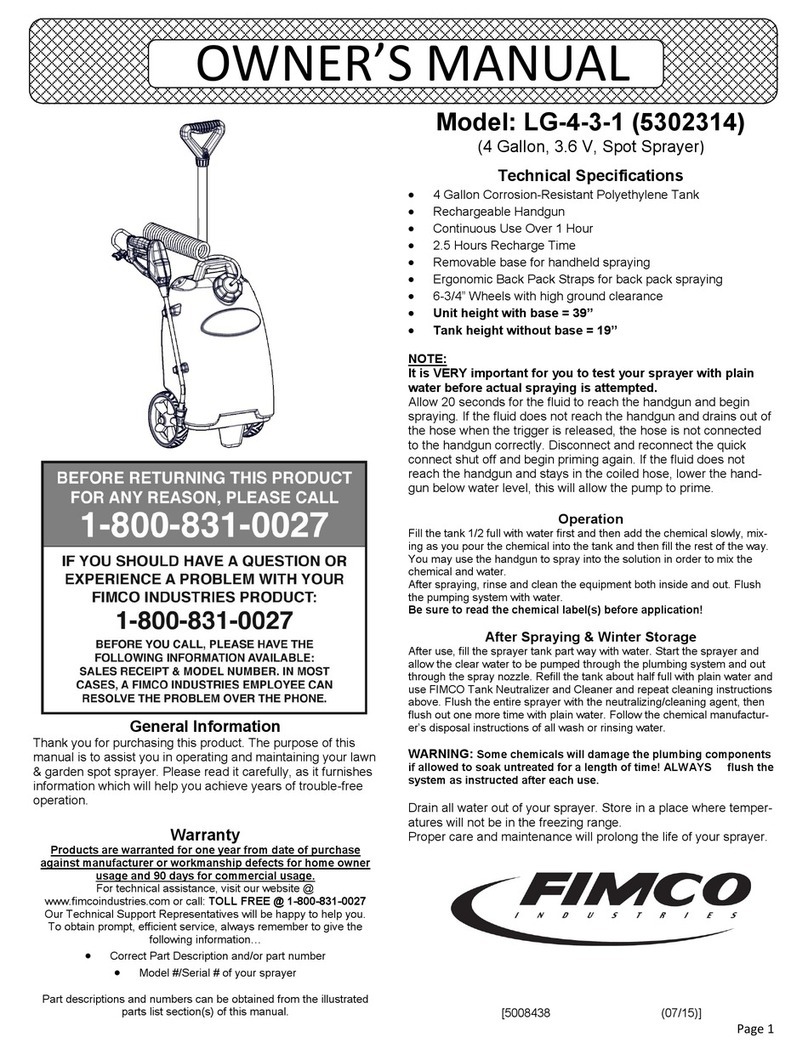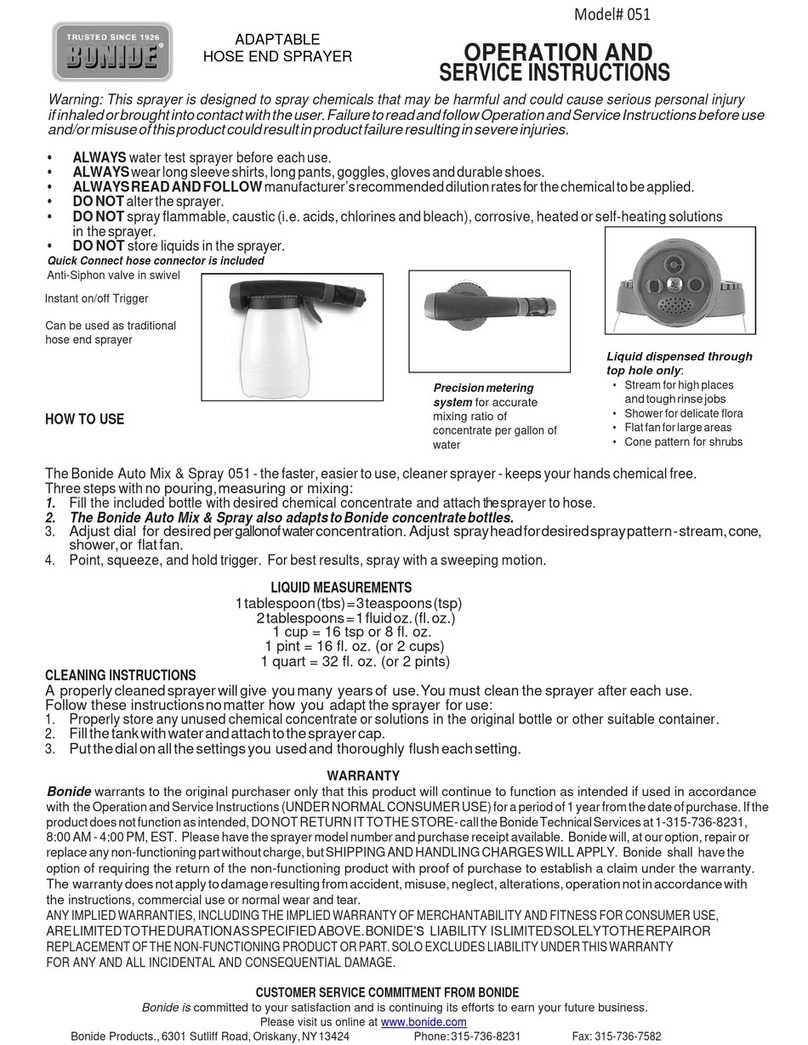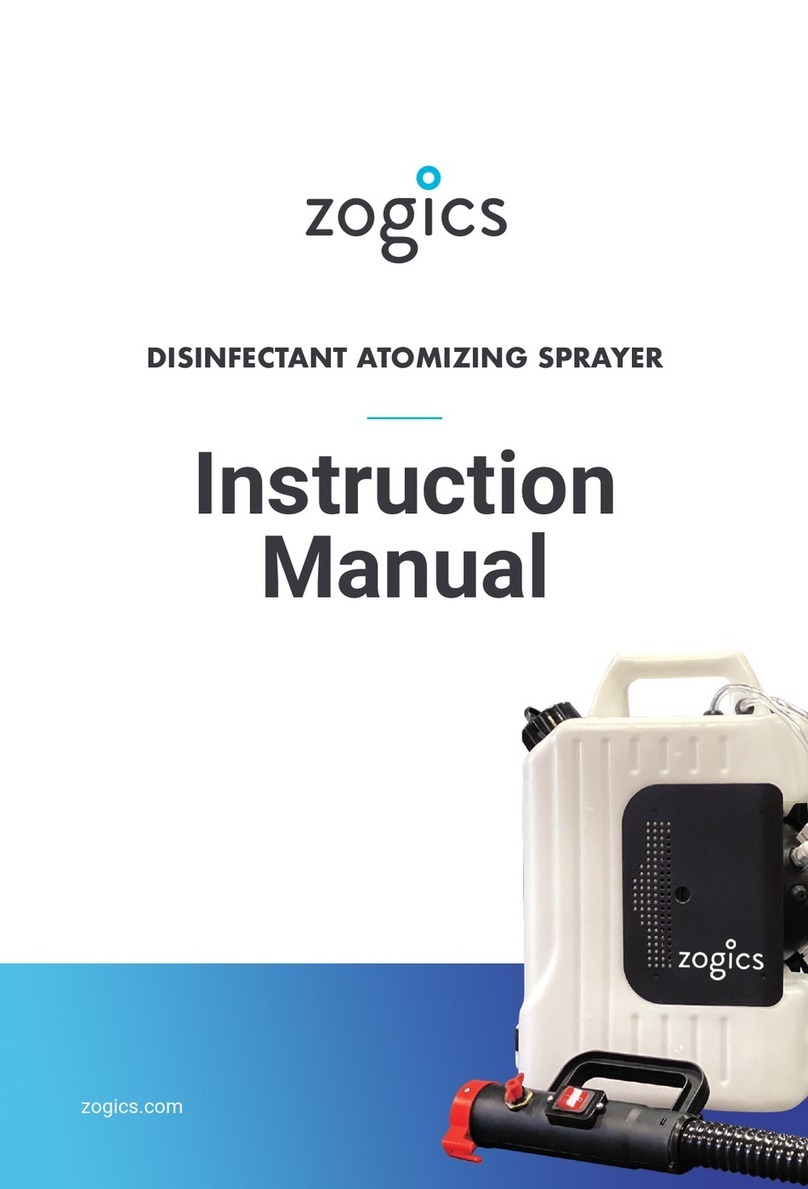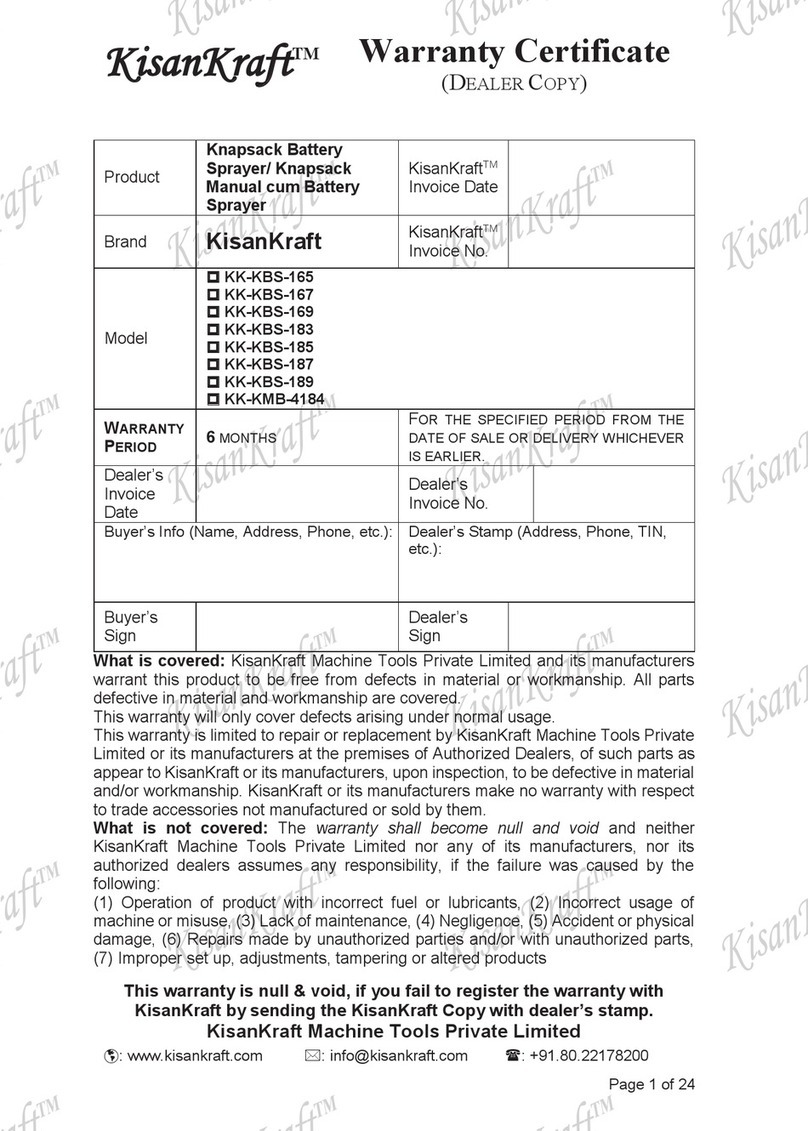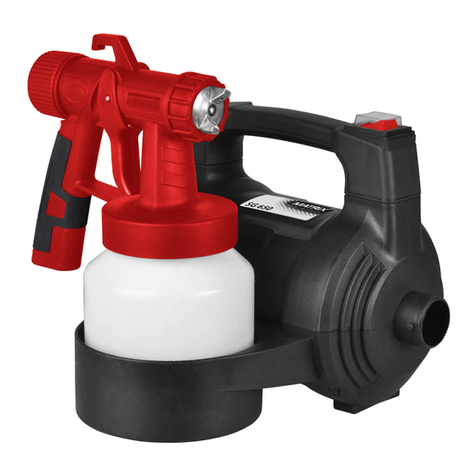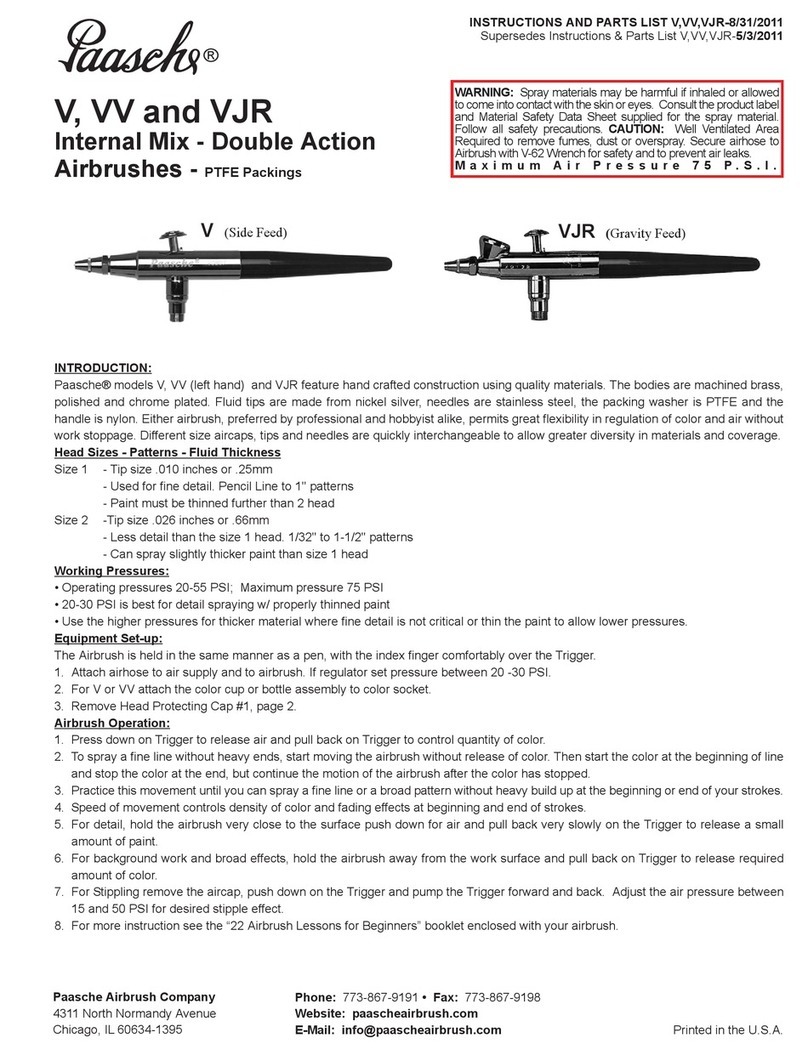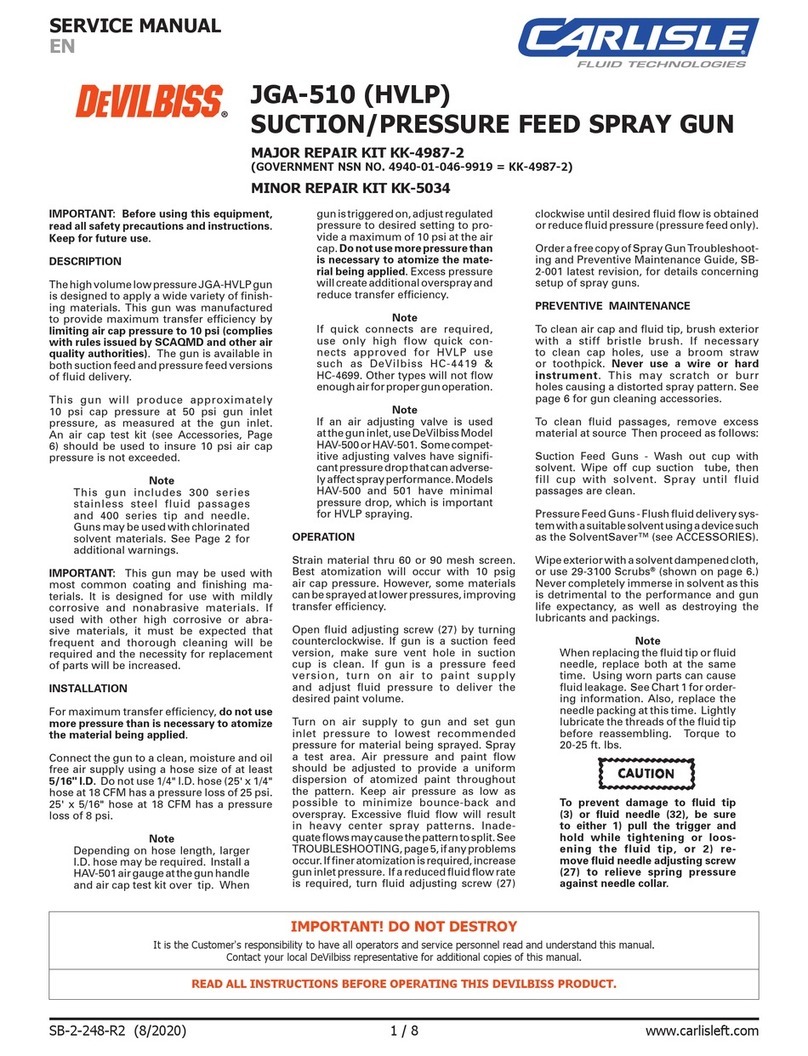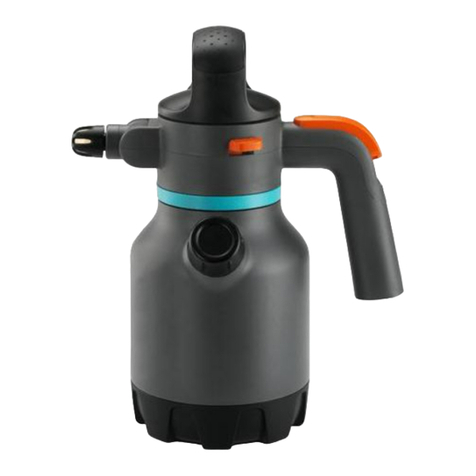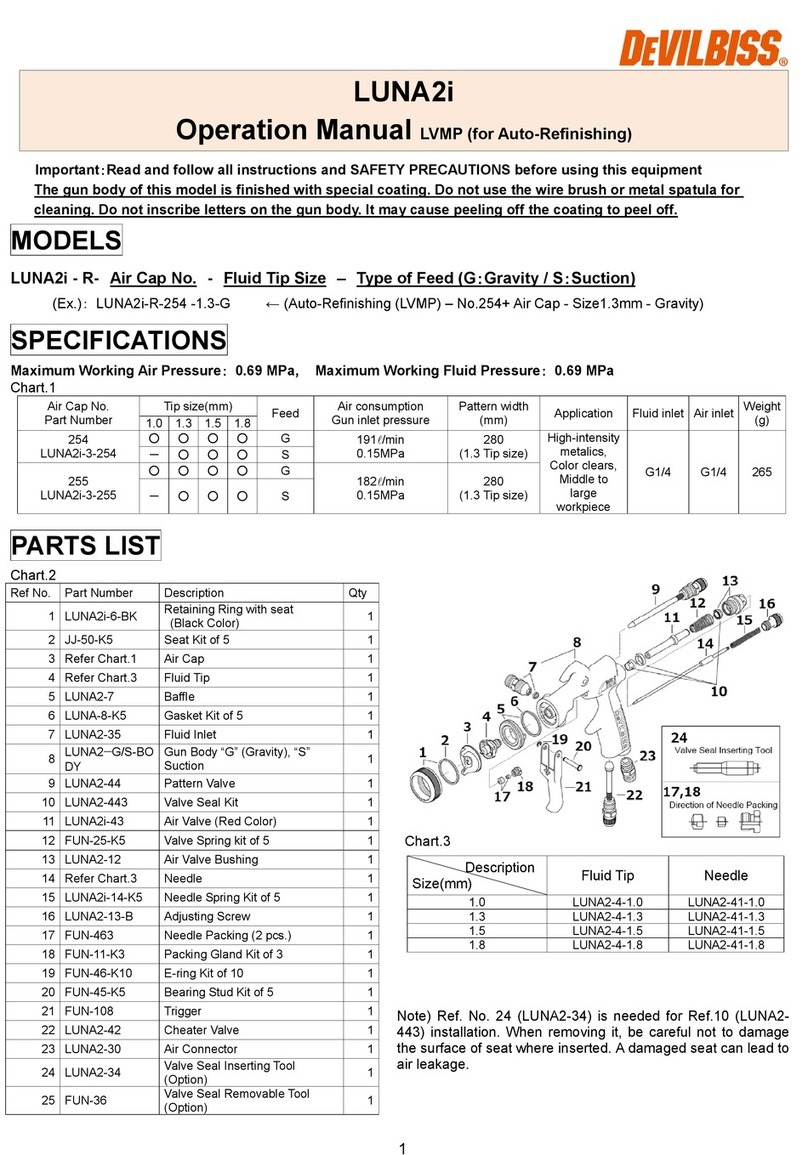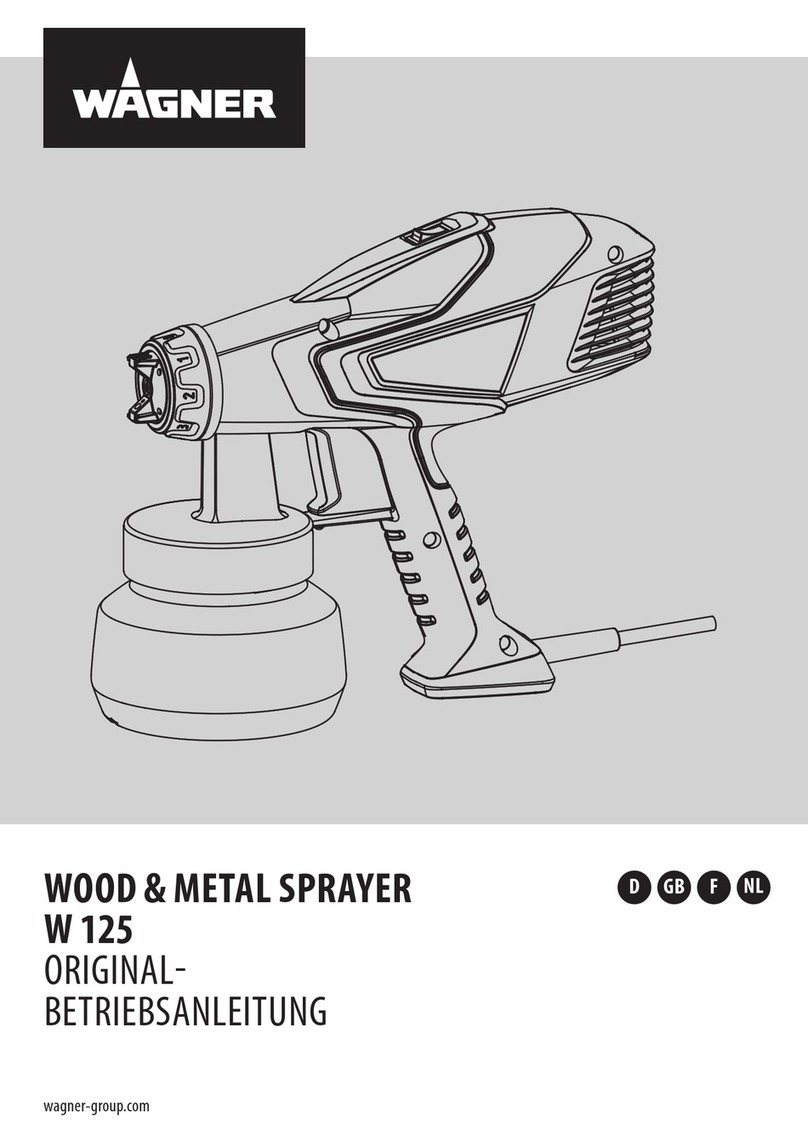
Setup
Supplied Components
Refer
to Fig. 2.
WARNING
A red-handled bleed-type master air valve (35) and
a fluid drain valve (D) are supplied. These accesso
-
ries help reduce the risk of serious injury
, including
fluid injection and splashing of fluid in the eyes or
on the skin, and injury from moving parts if you are
adjusting or repairing the pump.
The bleed-type master air valve relieves air trapped
between this valve and the pump after the valve is
closed. T
rapped air can cause the pump to cycle
unexpectedly
. Locate the valve close to the pump.
The fluid drain valve assists in relieving fluid pres
-
sure in the displacement pump, hose, and gun.
T
riggering the gun to relieve pressure may not be
sufficient.
The red-handled bleed-type master air valve
(35)
is required in your system to relieve air trapped
between it and the air motor when the valve is
closed (see the
WARNING
above). Be sure the
bleed valve is easily accessible from the pump, and
is located
downstream
from the air filter/regulator
(41).
With a wrench, loosen and remove the
female air
line coupler (38).
Screw it onto the main air hose
(A). Leave the mating coupler (37) attached to the
air filter/regulator (41).
The
air filter/regulator (41)
controls pump speed
and outlet pressure by adjusting the air pressure to
the pump. It also removes harmful dirt and mois
-
ture from the compressed air supply
. Locate close
to the pump, but
upstream
from the bleed-type
master air valve (35).
The air manifold (47)
provides ports for connect
-
ing lines to air-powered accessories.
The air relief valve (48)
opens automatically to
prevent overpressurization of the pump.
The air line lubricator (43)
provides automatic air
motor lubrication.
The fluid filter (7) or surge tank
includes a 60
mesh (250 micron) stainless steel element to filter
particles from the fluid as it leaves the pump. It
includes the
fluid drain valve (D),
which is re
-
quired in your system to relieve fluid pressure in the
hose and gun (see the
WARNING
at left).
The suction hose (8) and tube (11)
allow the
pump to draw fluid from a 19 liter (5 gallon) pail (E).
Two fluid shutoff valves (9)
are supplied at the
fluid filter outlets. Attach the fluid hose (103) to one
of the valves. Keep the other valve capped and
closed at all times unless you are using a second
hose and gun.
Connect the Suction Hose
Apply
thread sealant to the suction hose (8) and screw
it into the bushing (5) at the pump’
s fluid intake. Screw
the suction tube (1
1) onto the other end of the hose.
Connect the Fluid Hoses and Gun
NOTE:
Models 238–257 and 238–266 include a Hose
and Gun Kit (101), which supplies fluid hoses, a spray
gun, and connecting parts (ref. nos. 102–106). If you
supply your own fluid hoses and gun, be sure they are
properly sized and pressure-rated for your system.
Use only electrically conductive hoses.
1.
Connect the main fluid hose (103) to one fluid
shutof
f valve (9) at the fluid filter (7) outlet.
2.
Screw the coupling or nipple (105) onto the other
end of the main fluid hose (103).
3.
Screw the short whip hose (104) onto the coupling
or nipple (105).
4.
Screw the whip hose (104) onto the gun swivel
(106).
5.
Screw the gun swivel (106) onto the fluid inlet of
the spray gun (102).
Assemble Models 238–257 and 238–266
1. Assemble
the fluid hoses and gun as explained in
the preceding paragraph.
2.
Mark the date of assembly on the designation
plate (107) and install the plate as shown on its
separate instruction sheet.
